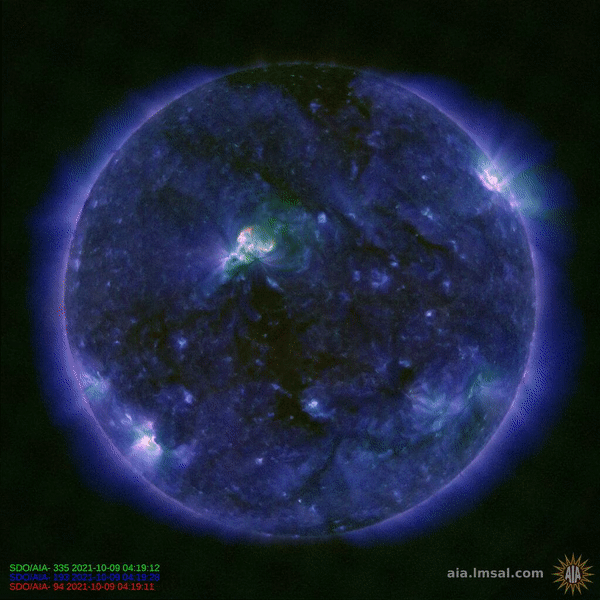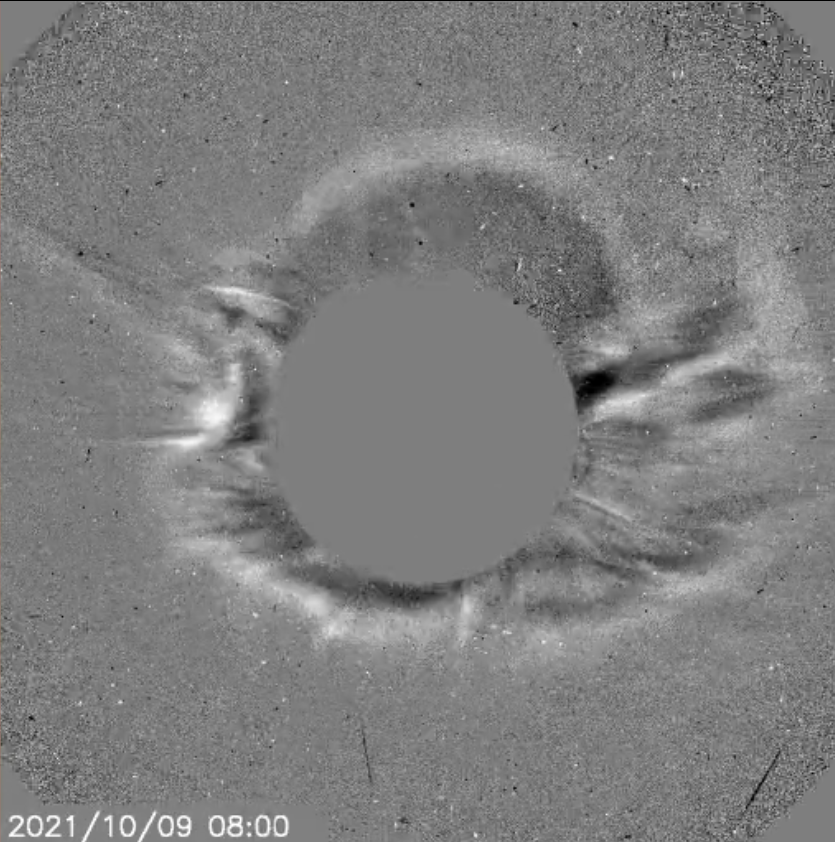Space Weather Alert - 11th October 2021
What Has Happened?
On 9th October an Earth-directed coronal mass ejection (CME) was launched from the Sun. This originated from a centrally located active region (AR12882) and was associated with an M1.6 X-ray solar flare. Coronagraph imagery shows a full-halo CME indicating that this is travelling directly toward Earth.
The shock from the CME is expected to arrive on the 11th (or early on 12th Oct). The resulting geomagnetic storm is likely to raise geomagnetic activity to STORM G1 or STORM G2 levels. If the configuration of the interplanetary magnetic field is favourable (i.e. a southward pointing field) there is a chance of activity up to STORM G3.
In addition, there is a coronal hole currently in an Earth facing position. This centrally located coronal hole will produce a high-speed solar wind stream that is predicted to arrive at Earth from the 12th Oct. This could prolong activity over the next few days after the initial storm impact, however this is expected to be at a more moderate ACTIVE level.
Assuming clear dark skies, and that the geomagnetic field is suitably disturbed, there is an increased chance of seeing the aurora. In the UK, those in Scotland, northern England and Northern Ireland may have the best opportunities.
Sign-up to receive Geomagnetic Disturbance Alert emails.
Follow us on Twitter:
Follow @BGSauroraAlert for more occasional aurora alerts.
Follow @BGSspaceWeather for daily space weather forecasts.
Glossary
- BGS
- The British Geological Survey is part of UK Research and Innovation (UKRI) and is one of the Natural Environment Research Council's Research Centres.
- CME or Coronal Mass Ejection
- The eruption of a portion of the outer atmosphere of the Sun into space, caused by rapid changes in its magnetic field. Often occurs along with a solar flare.
- Coronal Hole
- A region in the Sun’s outer atmosphere (corona) where hot material can flow unrestrained by its magnetic fields out into space.
- Solar Flare
- Energy released by the explosive reorganisation of magnetic fields within the Sun's atmosphere.
- High Speed Stream
- A fast moving stream of solar wind, responsible for magnetic storms.
- Solar Wind
- The ever-present expansion of the Sun’s hot outer atmosphere into the solar system, which carries space weather within it.
- Sunspot/Active Region
- A region of intense magnetic field in the Sun's visible outer atmosphere often associated with flares and CMEs.



